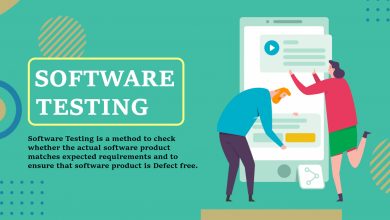Organic vs. Paid Social Media Services: Understanding the Differences and Benefits

In the world of social media marketing, businesses have two primary avenues to reach their audience: organic and paid social media services. While both methods aim to enhance brand visibility and engagement, they differ significantly in execution, benefits, and outcomes. Understanding these differences can help businesses develop a balanced strategy that leverages the strengths of both. Here’s a breakdown of what each service entails and the unique advantages they offer.
Organic Social Media Services
Definition and Approach
Organic social media refers to the free content that businesses share on their social media profiles. This includes posts, videos, stories, and other forms of content that can be viewed by followers and anyone else who stumbles upon the profile or content through searches or sharing.
Benefits of Organic Social Media
- Building Authentic Relationships
Organic social media allows brands to connect with their audience on a more personal level. Through regular posting and interaction, businesses can foster a sense of community and build trust with their followers. This authentic engagement is essential for long-term customer loyalty. - Cost-Effective Strategy
Since organic posts do not require a financial investment beyond content creation, this approach is highly cost-effective. It’s an ideal starting point for small businesses or startups looking to build their online presence without a significant budget. - Long-Term Engagement
Organic social media helps in maintaining a consistent brand presence. Over time, regular posts can lead to steady growth in followers and engagement, contributing to sustained visibility and customer relationships. - Content Experimentation
With organic posts, brands have the freedom to experiment with different types of content to see what resonates most with their audience. This experimentation can inform future strategies, both organic and paid.
Paid Social Media Services
Definition and Approach
Paid social media involves promoting content through advertising platforms on social media networks. This includes boosting posts, running targeted ads, and sponsoring content to reach a larger or more specific audience than organic methods typically allow.
Benefits of Paid Social Media
- Immediate Reach and Visibility
Paid social media provides instant access to a broader audience. Businesses can target specific demographics, locations, and interests, ensuring their message reaches the right people at the right time. This immediacy is crucial for time-sensitive campaigns or promotions. - Enhanced Targeting Capabilities
One of the biggest advantages of paid social media is its sophisticated targeting options. Brands can hone in on their ideal customer profile, maximizing the efficiency and effectiveness of their marketing efforts. This targeted approach often leads to higher conversion rates. - Measurable ROI
Paid campaigns come with robust analytics tools that allow businesses to track performance in real-time. Metrics such as impressions, clicks, conversions, and ROI are easily measured, enabling data-driven decision-making and optimization of future campaigns. - Scalability and Customization
Paid social media is highly scalable, making it suitable for both small and large businesses. Companies can start with a modest budget and scale up as they see results. Additionally, the customization options for ad formats, placements, and bidding strategies provide flexibility to align with specific business goals.
Choosing the Right Strategy: A Balanced Approach
While organic and paid social media services each have their unique advantages, the most successful strategies often involve a combination of both. Here’s why integrating both can be beneficial:
1. Leveraging Organic for Trust Building
Organic social media builds a foundation of trust and credibility. By regularly engaging with your audience through organic posts, you create a loyal community that’s more likely to respond positively to your paid campaigns.
2. Amplifying Reach with Paid Ads
Paid social media can amplify the reach of your best-performing organic content, ensuring it reaches a wider audience. This synergy between organic and paid efforts can maximize engagement and conversions.
3. Maximizing ROI through Combined Insights
Data gathered from organic interactions can inform paid strategies, while insights from paid campaigns can refine organic content. This cross-channel intelligence leads to a more effective overall social media strategy.
Conclusion
Both organic and paid social media services play essential roles in a comprehensive social media marketing strategy. Organic efforts build long-term relationships and credibility, while paid strategies offer immediate reach and precise targeting. By understanding the differences and benefits of each, businesses can create a balanced approach that leverages the strengths of both to achieve their marketing goals.




